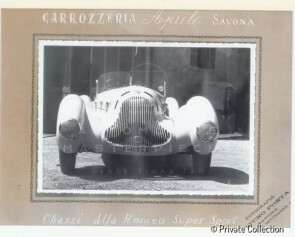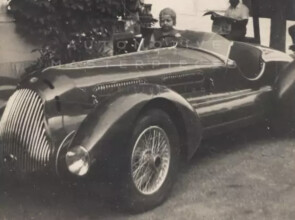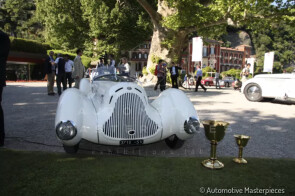
1931 Alfa Romeo 6C 1750 Gran Sport
ON/OFF
Why am I an Automotive Masterpiece?
In the early 1920s Vittorio Jano was entrusted by Alfa Romeo with the creation of a lightweight, high-performance vehicle to replace the large and heavy RL and RM models. The result was the Alfa Romeo 6C: a range of road, race, and sports cars produced between 1927 and 1954; the main steps being the 6C 1750 in 1929, the 6C 2300 in 1934 and the 6C 2500 in 1939. The "6C" designation refers to the number of cylinders in the car's straight-six engine. The bodies were crafted by renowned coachbuilders such as Castagna, James Young, Pininfarina, Touring, and Zagato. Starting in 1933, Alfa Romeo also offered an in-house body option, built at their Portello factory. The new 6-cylinder car was introduced in 1925 at the Salone dell'Automobile di Milano and officially produced from 1927 with the name 6C 1500, recalling the engine layout and displacement. This displacement choice was necessary, because the 2-liter formula leading Alfa Romeo to win the Automobile World Championship in 1925, had changed to 1.5-liter for the 1926 season.
The more powerful 6C 1750 was introduced in 1929 in Rome. The car featured a top speed of 95 mph (153 km/h), a chassis designed to flex over wavy surfaces, as well as sensitive geared-up steering. It was produced in six series between 1929 and 1933. Base model had a single overhead cam; Super Sport and Gran Sport versions had double overhead cam engine (DOHC) and a supercharger was available. Most of the cars were sold as rolling chassis and bodied by coachbuilders. The 1750 quickly gained a reputation for winning. In 1929, it won every major racing event it was entered, including the Grands Prix of Belgium, Spain, Tunis and Monza, as well as the Mille Miglia, with Giuseppe Campari and Giulio Ramponi. In 1930 it won again the Mille Miglia with Tazio Nuvolari and the Spa 24 Hours. Total production was of 2635 cars. From the beginning, the racing background of the brand led inevitably to the birth of a sporty version of the 6C, the 6C 1500 SS, fitted with a compressor, soon replaced by the 6C 1750 SS in 1929 and the 6C 1750 GS in 1930. The 6C 1750 GS (Gran Sport) was produced in three series (IV, V and VI) until 1933, for a total of around 250 units. The chassis of the Gran Sport was shortened to a wheelbase of 2.745 m and the engine was capable of 85 hp, for a top speed of around 145 km/h. Almost all 6C 1750 GS produced were bodied with a spider body by Zagato or Touring, ideal for the sporting purposes of the model.
Born with a spider bodywork by Zagato, this car is a 6C 1750 Gran Sport with compressor, the sportiest version of the Milanese six-cylinder, and it was sold new in Genova in 1931. During the thirties the car ran in some races, like the 1934 Varese-Campo dei Fiori hillclimb and Targa Abruzzo, and changed hands many times. In 1938 the cars was purchased by Giuseppe Aprile, coachbuilder in Savona, seems with some damage. He bought it with the intent of fitting it with a brand new and more modern body. Aprile involved Count Revelli de Beaumont to pen the new lines. The noted designer created a stunningly aerodynamic shape, perhaps following the creative imput of the same Aprile. Soon after the work was completed, Aprile sold the car to a local enthusiast. He carefully hid the car during the War and owned it until 1956. The fourth owner cherished the unique automobile and held on to it for long time during which it was only very rarely seen. The car has always been in the region of Liguria, was changed in color and in some details but has survived to the present day. The work of restoration took two years to complete. With help and collaboration from the Politecnico of Milano University the exact shades of white and blue have been recreated.




